Lettuce is one of the most popular salad crops grown worldwide. It is a cool-season crop that is easy to grow and provides a lot of nutritional benefits. Understanding the lettuce plant growth stages is essential to ensure that you get the best yield possible. In this article, I will guide you through the Lettuce Plant Growth Stages, from seed to harvest.
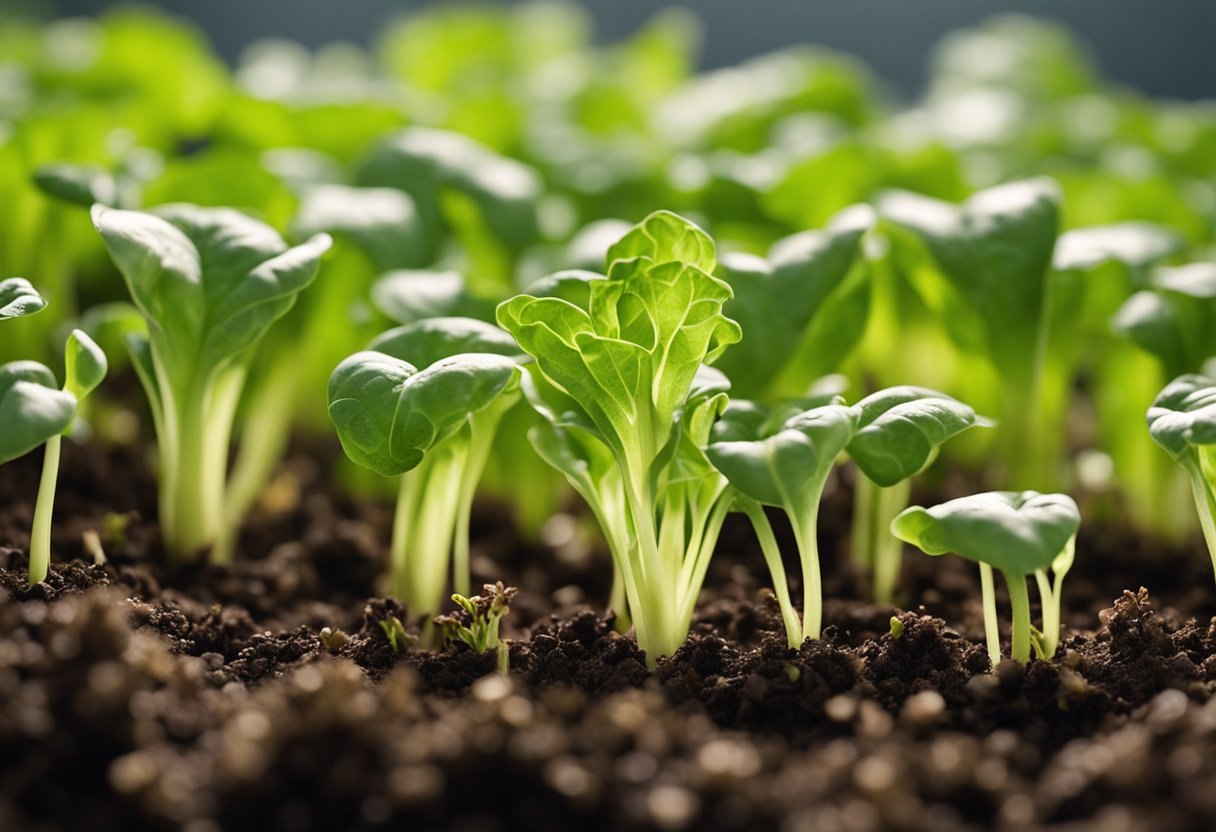
The lettuce plant has four distinct growth stages: germination, seedling, vegetative, and flowering. Each stage has unique characteristics that you need to be aware of to ensure proper plant growth. The germination stage is when the seed starts to grow into a plant. The seedling stage is when the plant starts to grow its first true leaves. The vegetative stage is when the plant grows its leaves and stems, and the flowering stage is when the plant starts to produce flowers.
Key Takeaways
- Lettuce has four distinct growth stages: germination, seedling, vegetative, and flowering.
- Understanding the different stages of lettuce growth is essential to ensure proper plant growth and yield.
- Proper harvesting and post-harvest lifecycle management are crucial for the long-term success of your lettuce crop.
Understanding Lettuce Biology
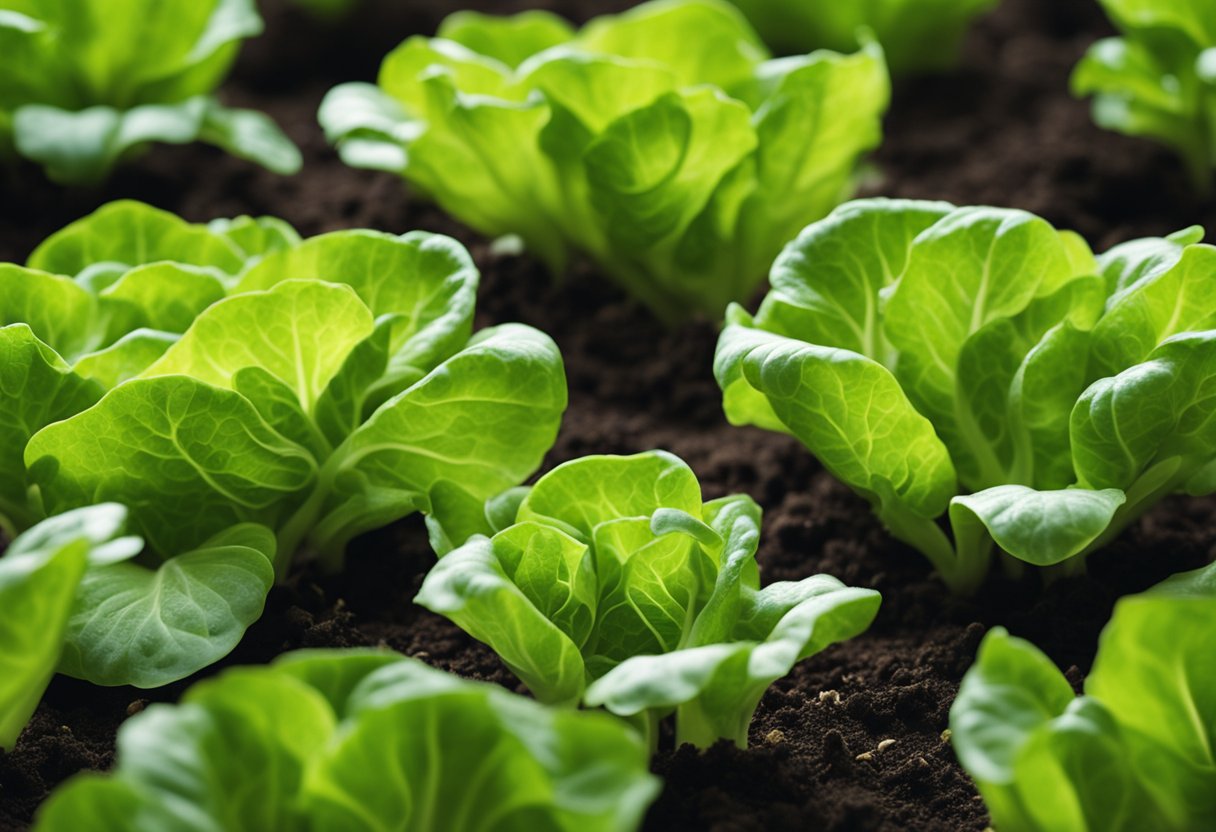
As a plant, lettuce has its own unique biology that is important to understand in order to grow it successfully. In this section, I will provide an overview of the species varieties and anatomy of lettuce.
Species Varieties
There are four main species of lettuce: Lactuca sativa, Lactuca serriola, Lactuca canadensis, and Lactuca virosa. Lactuca sativa is the most commonly cultivated species and includes many different varieties such as butterhead, romaine, and iceberg lettuce. Lactuca serriola, also known as prickly lettuce, is a wild lettuce that is often considered a weed. Lactuca canadensis, or wild lettuce, is also a wild lettuce and is commonly used for medicinal purposes. Lactuca virosa, or opium lettuce, contains a milky sap that has sedative properties.
Anatomy of Lettuce
Lettuce is a leafy vegetable that belongs to the family Asteraceae. The plant has a rosette of leaves that emerge from a central stem. The leaves are generally green, but can also be red or purple. Lettuce has a taproot system with a main root that grows deep into the soil and smaller lateral roots that spread out horizontally. The plant also has a stem that grows up from the root and supports the leaves.
The leaves of lettuce are composed of three main parts: the blade, the petiole, and the midrib. The blade is the flat, expanded part of the leaf that is used for photosynthesis. The petiole is the stalk that attaches the blade to the stem. The midrib is the central vein that runs down the center of the blade and provides support.
Understanding the biology of lettuce is crucial for growing it successfully. By knowing the different species varieties and the anatomy of the plant, you can make informed decisions about how to care for it and ensure a healthy harvest.
Germination Stage
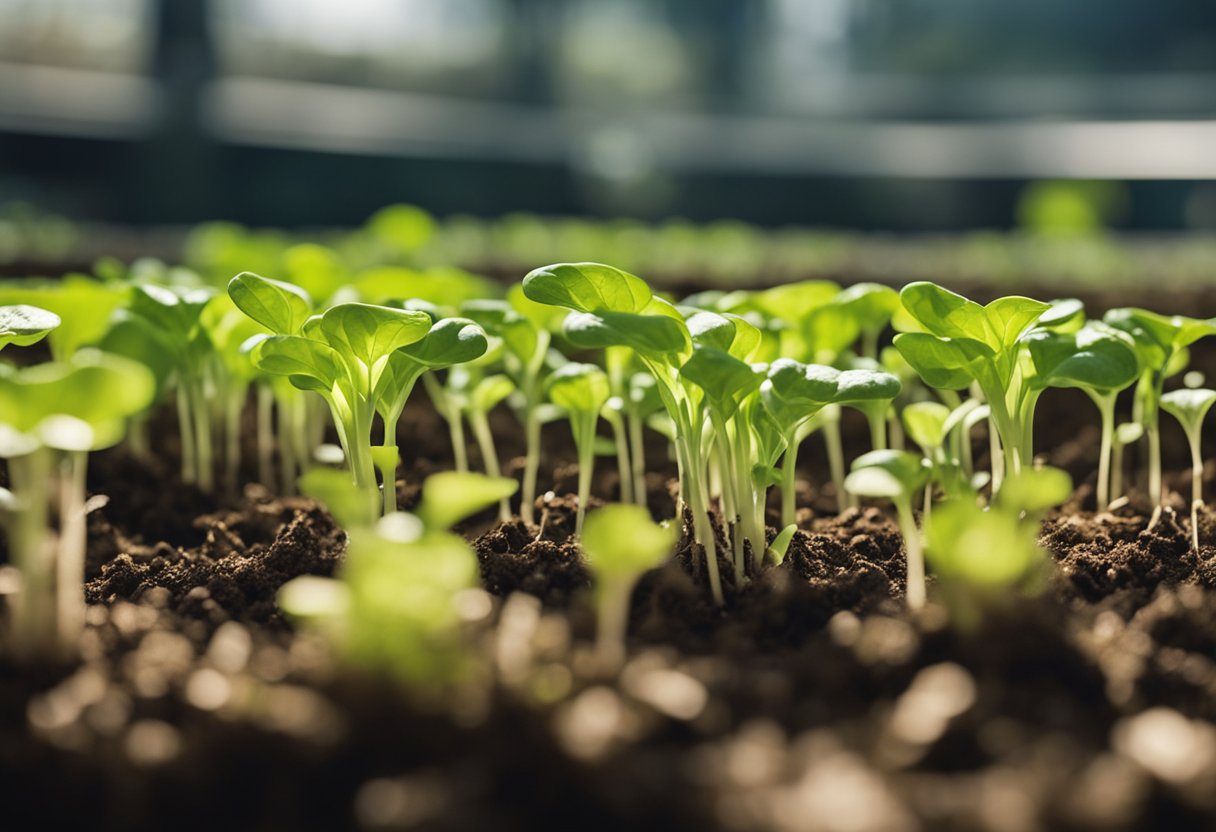
Seed Selection
When it comes to seed selection for lettuce germination, it is important to choose high-quality seeds that have a high germination rate. Look for seeds that are fresh, as older seeds may have a lower germination rate. It is also important to choose seeds that are suited to your climate and growing conditions.
Germination Conditions
Lettuce seeds require specific conditions for successful germination. The ideal temperature range for lettuce seed germination is between 60 and 68 degrees Fahrenheit. Seeds should be planted in a well-draining soil mix, with a pH range of 6.0 to 7.0. Seeds should be planted at a depth of approximately 1/4 inch.
To encourage germination, seeds should be kept moist but not waterlogged. This can be achieved by misting the soil surface regularly or covering the seed tray with a plastic dome or plastic wrap. It is also important to keep the soil temperature consistent and avoid exposing the seeds to extreme temperature fluctuations.
Successful lettuce germination requires careful seed selection and proper germination conditions. By providing the right environment for your lettuce seeds, you can ensure a healthy and productive crop.
Seedling Stage
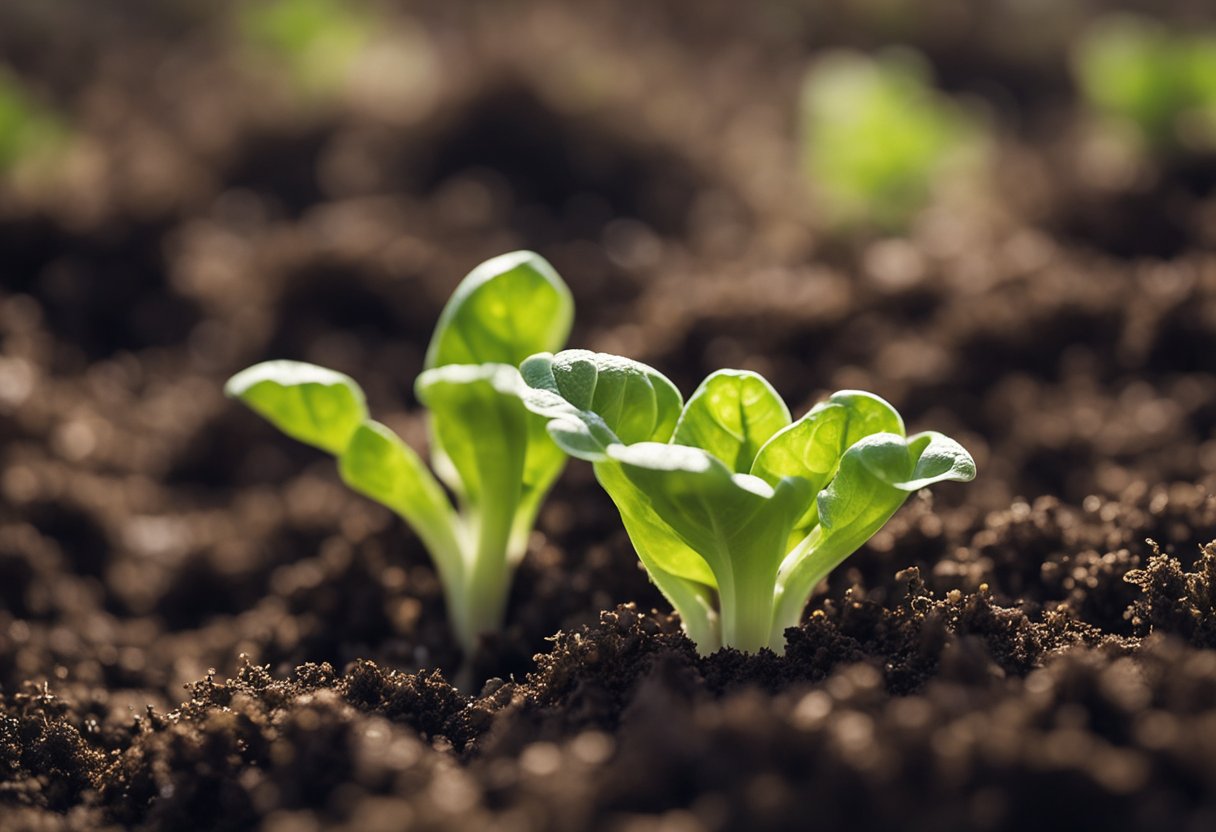
As a lettuce plant grows from a seed, it goes through several stages, beginning with the seedling stage. This stage is marked by the emergence of the first true leaves, which are the second set of leaves to appear after the cotyledons. At this stage, the lettuce plant is still very fragile and requires special care.
Transplanting Seedlings
Transplanting lettuce seedlings is an important step in their growth process. It is best to transplant seedlings when they are about 3-4 weeks old and have at least 2-3 true leaves. Before transplanting, it is important to prepare the soil by adding compost or other organic matter to ensure that the soil is rich in nutrients.
When transplanting, it is important to handle the seedlings carefully to avoid damaging their delicate roots. It is also important to space the seedlings properly to ensure that they have enough room to grow. For most varieties of lettuce, a spacing of 6-8 inches between plants is ideal.
Lighting Requirements
During the seedling stage, lettuce plants require plenty of light to grow properly. If you are growing lettuce indoors, it is important to provide them with at least 12 hours of light per day. This can be achieved by using grow lights or by placing the seedlings near a sunny window.
It is also important to ensure that the seedlings are not exposed to too much heat, as this can cause them to wilt and die. Keeping the temperature between 60-70°F is ideal for most varieties of lettuce.
By providing the right amount of light and temperature, and by transplanting the seedlings at the right time, you can help your lettuce plants to grow strong and healthy, setting them up for success in the next stages of their growth.
Vegetative Growth Stage
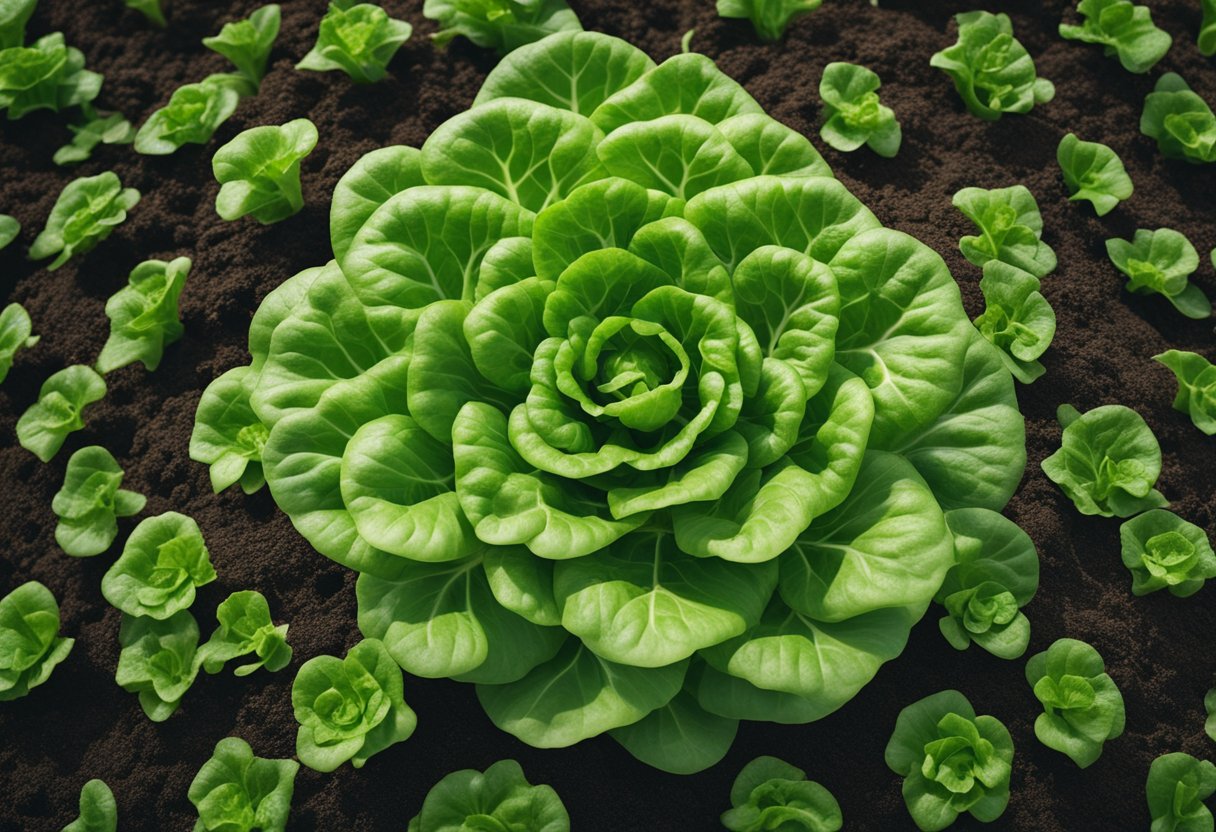
During the vegetative growth stage, lettuce plants are focused on developing leaves and roots. This stage begins after the seed germination and lasts until the plant starts to form a head. In this stage, lettuce plants require the right amount of nutrients and water to grow healthy and strong.
Nutrient Needs
Lettuce plants require a balanced supply of nutrients to grow properly during the vegetative growth stage. Nitrogen, phosphorus, and potassium are essential nutrients needed for healthy growth. Nitrogen is responsible for the growth of leaves and stems, while phosphorus is essential for the development of roots and flowers. Potassium is necessary for the overall health of the plant and helps with water regulation.
It’s important to provide the right amount of nutrients to lettuce plants during the vegetative growth stage. Too much nitrogen can cause the plant to grow too quickly, resulting in weak stems and leaves. On the other hand, too little nitrogen can cause stunted growth and yellowing leaves. A balanced fertilizer with an NPK ratio of 3-1-2 is ideal for lettuce plants during the vegetative growth stage.
Watering Practices
Lettuce plants require consistent moisture to grow properly during the vegetative growth stage. The soil should be kept moist but not waterlogged, as this can cause root rot. It’s important to water lettuce plants deeply, so the roots can absorb water and nutrients.
One way to ensure proper moisture levels is to mulch around the base of the plant. Mulching helps to retain moisture in the soil, preventing it from drying out too quickly. It’s also important to water lettuce plants in the morning, so the leaves have time to dry before nightfall. Wet leaves at night can lead to fungal diseases.
Providing the right amount of nutrients and water during the vegetative growth stage is essential for growing healthy lettuce plants. A balanced fertilizer with an NPK ratio of 3-1-2 and consistent watering practices will help ensure proper growth and development.
Also Read | Peach Tree Growth Stages: A Journey from Seed to Fruit
Bolting and Flowering Stage
As lettuce plants mature, they will eventually reach the bolting and flowering stage. This is a natural part of the plant’s life cycle, but it can also signal the end of the plant’s usefulness in terms of producing edible leaves. Here are some things to know about the bolting and flowering stage of lettuce plants.
Recognizing Bolting Signs
Bolting is the process by which lettuce plants produce a tall stalk and flowers. This typically occurs when the weather gets warmer, and the plant senses that it needs to reproduce before it dies. Signs of bolting include the appearance of a tall stalk in the center of the plant, the leaves becoming more bitter and less tender, and the plant producing fewer leaves overall.
Controlling Flowering
While bolting is a natural process, it can be frustrating for gardeners who want to continue harvesting lettuce leaves. There are a few ways to help control bolting and extend the life of your lettuce plants.
One method is to plant lettuce in a cooler part of the garden or in the shade of taller plants. This can help keep the plant cooler and delay the onset of bolting. Another method is to choose lettuce varieties that are less prone to bolting, such as romaine or butterhead lettuce.
If your lettuce plants do bolt, you can still harvest the flowers and use them in salads or as a garnish. However, the leaves will become more bitter and less tender, so it’s best to harvest them before the plant reaches this stage. In addition, you can remove the bolting plant and replace it with a new one to continue your lettuce harvest.
The bolting and flowering stage is a natural part of the lettuce plant’s life cycle. By recognizing the signs of bolting and taking steps to control it, you can extend the life of your lettuce plants and continue to enjoy fresh, tender leaves throughout the growing season.
Harvesting
Harvesting lettuce is an important step in the lettuce plant growth stages. It is crucial to harvest the lettuce at the right time to ensure that it is fresh and has the best flavor. In this section, I will discuss the different techniques for harvesting lettuce and how to handle it after it has been harvested.
Harvest Techniques
There are two main techniques for harvesting lettuce: cutting and pulling. Cutting is the most common technique and involves using a sharp knife or scissors to cut the lettuce leaves close to the base of the plant. Pulling involves pulling the entire plant out of the ground, which can be useful if you want to harvest the entire plant at once.
When harvesting lettuce, it is important to avoid damaging the leaves. Damaged leaves can lead to spoilage and reduce the quality of the lettuce. It is also important to harvest the lettuce in the morning when the leaves are crisp and full of water.
Post-Harvest Handling
After harvesting the lettuce, it is important to handle it properly to ensure that it stays fresh and has the best flavor. The first step is to wash the lettuce thoroughly to remove any dirt or debris. It is important to dry the lettuce thoroughly after washing to prevent it from becoming soggy.
Once the lettuce is clean and dry, it can be stored in the refrigerator. It is best to store lettuce in a plastic bag or container with a damp paper towel to keep it moist. Lettuce can be stored in the refrigerator for up to a week, but it is best to use it as soon as possible to ensure that it is fresh and has the best flavor.
Harvesting lettuce is an important step in the lettuce plant growth stages. By using the right techniques for harvesting and handling lettuce, you can ensure that it stays fresh and has the best flavor.
Post-Harvest Lifecycle
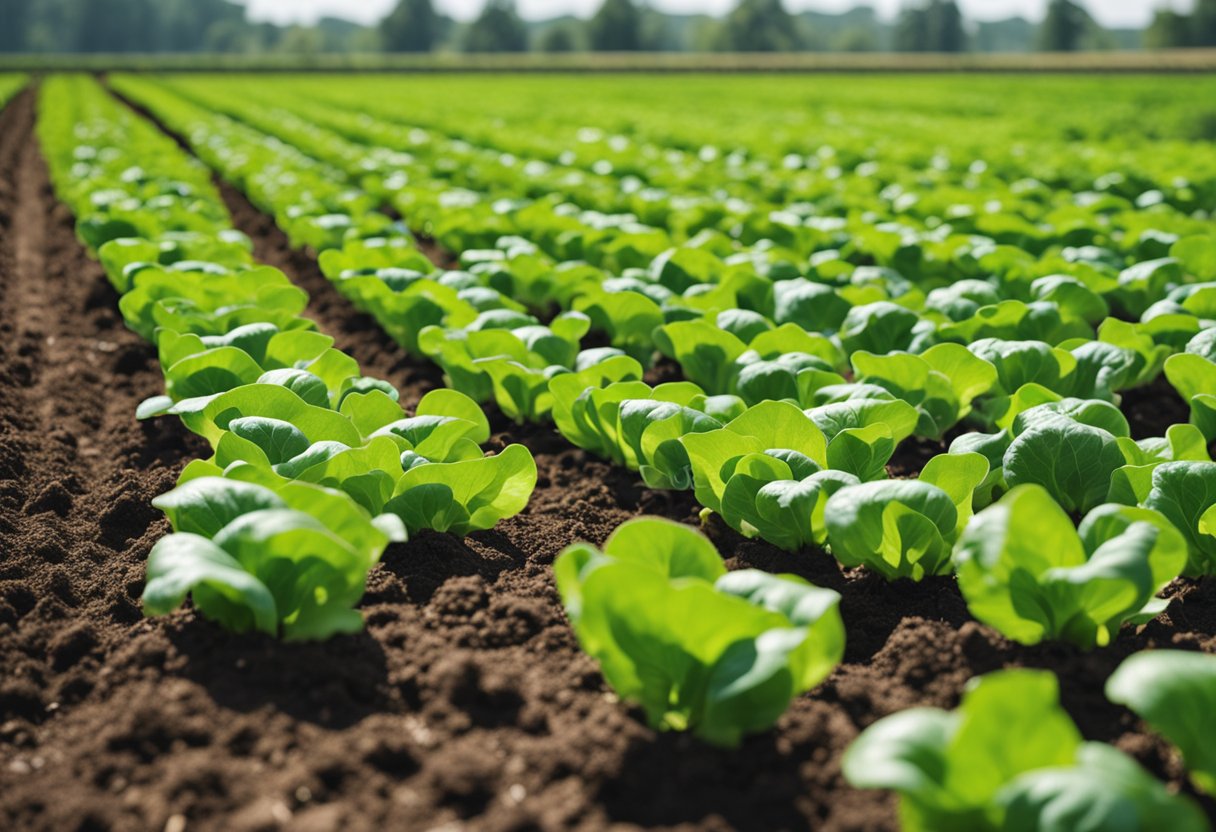
After harvesting lettuce, the post-harvest lifecycle begins. This stage is critical in determining the quality and shelf life of the lettuce. Proper handling and storage are essential to maintain the nutritional value and freshness of the lettuce.
Seed Collection
To continue the lettuce lifecycle, seeds must be collected from mature lettuce plants. It is important to collect seeds from healthy plants that exhibit desirable traits such as good flavor, color, and texture. Seeds should be stored in a cool, dry place until planting.
Crop Rotation Benefits
Crop rotation is a beneficial practice in lettuce production. It involves planting different crops in the same field in successive seasons to reduce soil-borne diseases and pests. Crop rotation also helps to maintain soil fertility and structure.
In addition, crop rotation can help to reduce the risk of lettuce diseases such as lettuce drop and verticillium wilt. These diseases can cause significant yield losses and reduce the quality of the lettuce.
Proper post-harvest handling and crop rotation practices are crucial in maintaining the quality and productivity of lettuce. By following these practices, growers can ensure a healthy and sustainable lettuce production system.
FAQs – Lettuce Plant Growth Stages
What are the key stages in the life cycle of a lettuce plant?
The key stages in the life cycle of a lettuce plant are seed, germination, first true leaves and seedling, rosette, cupping, heading, and bolting stage. During each stage, the plant undergoes different changes and requires different care.
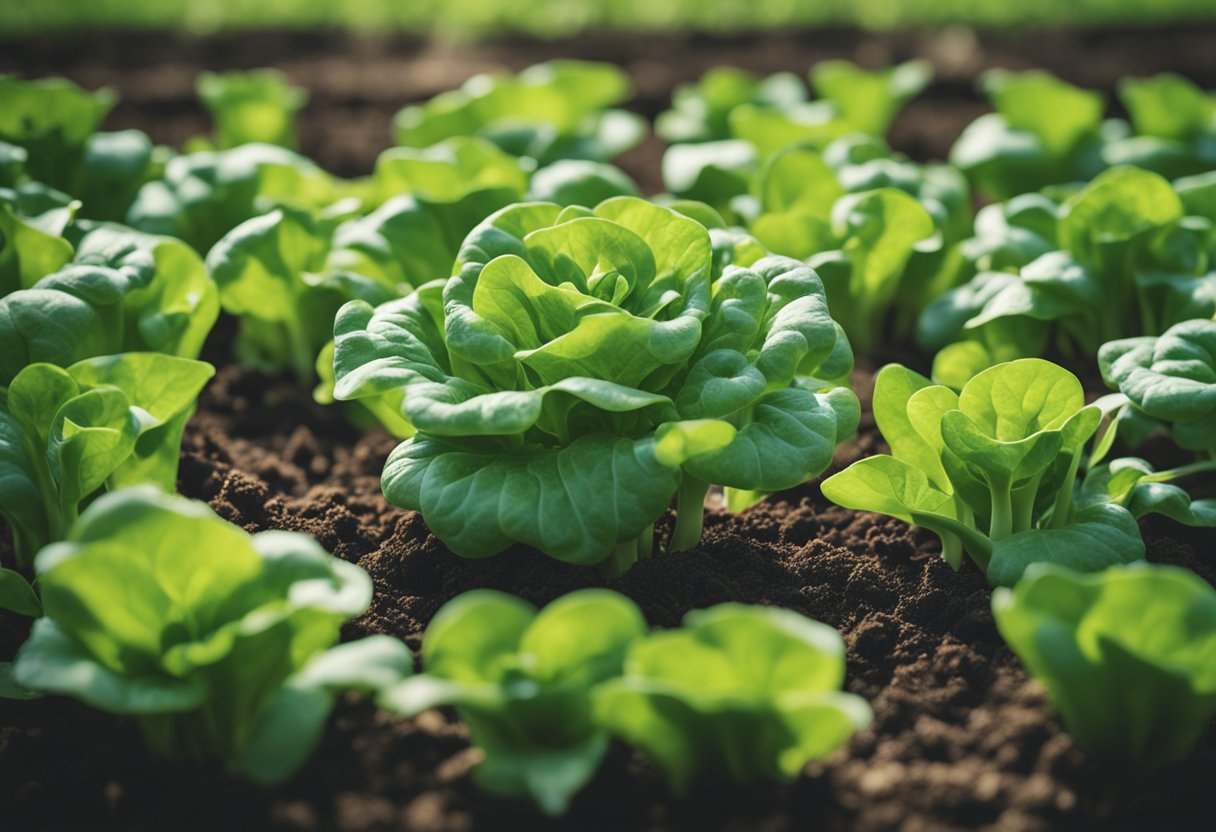
How long does it typically take for lettuce to reach maturity?
The time it takes for lettuce to reach maturity depends on the variety and growing conditions. Generally, it takes around 45 to 60 days for lettuce to reach maturity. However, some varieties may take longer or shorter.
At what depth should lettuce seeds be planted for optimal growth?
Lettuce seeds should be planted at a depth of 1/8 to 1/4 inch for optimal growth. Planting the seeds too deep or too shallow can affect their germination rate and growth.
What are the signs of lettuce bolting and how can it be prevented?
Lettuce bolting is the process where the plant produces a flower stalk and stops producing leaves. The signs of lettuce bolting include elongated stem, bitter taste, and yellowing leaves. To prevent lettuce bolting, it is important to keep the plant cool and well-watered.
How can you identify the different growing stages of butterhead lettuce?
Butterhead lettuce goes through the same growing stages as other lettuce varieties. However, you can identify butterhead lettuce by its loose, buttery leaves and sweet flavor.
What height indicates that lettuce is ready for harvest?
Lettuce is ready for harvest when it reaches a height of 4 to 6 inches, depending on the variety. It is important to harvest lettuce before it bolts to ensure the best flavor and texture.